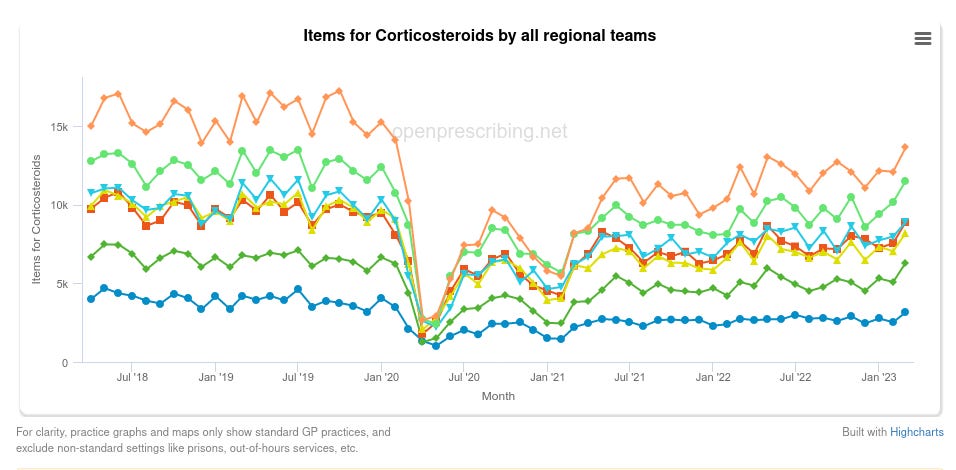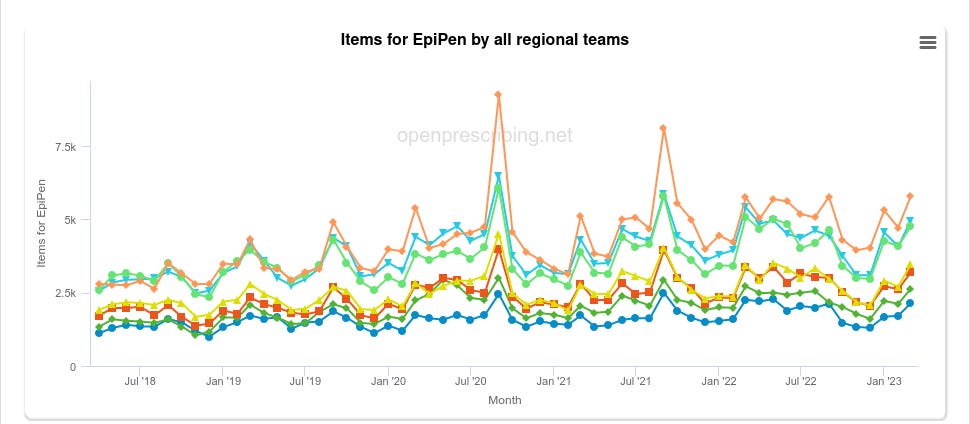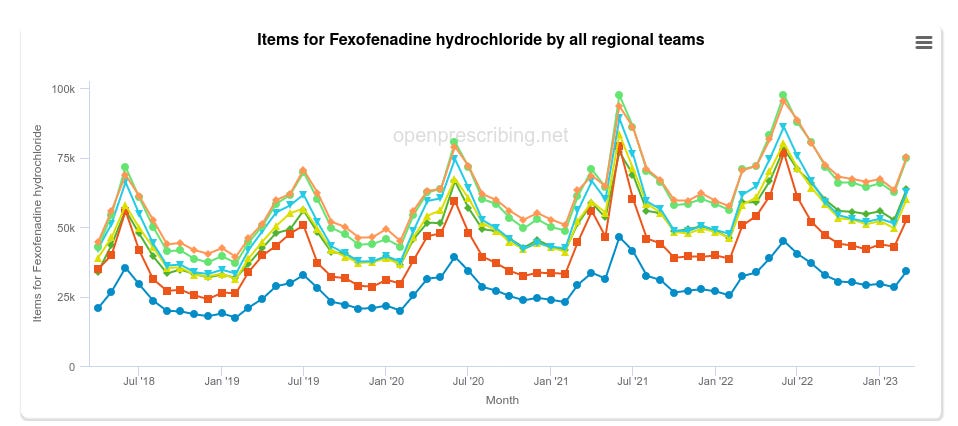Anaphylaxis isn’t simply treated with just adrenaline.
It depends very much on severity. Paramedics are often reluctant to give adrenaline shots as there can be a seemingly ironic ‘meta’ in the person could also be allergic to the adrenaline shot, or it could introduce secondary complications. So if a shot is used you’d only be picking up the absolute worst cases and not all cases.
It’d only be administered in the event the persons airways were closing up or they were going into severe shock.
If the Anaphylaxis is low grade, they will offer things like anti-histamines (which are over-the-counter and have no prescription data), and steroids (corticosteroids) which may or may not be prescription-based depending on strength.
Interestingly, what we see during the Midazolam Murders (March-April 2020) is corticosteroid usage actually drops sharply down:
That is because corticosteroids are actually a good means of helping to reduce SARS-CoV-2 lung inflammation symptoms, which, if you’re trying to bump off the elderly, isn’t useful.
EpiPen - a type of brandname adrenaline shot made by Pfizer - had two distinct spikes, one in September 2020, and one in September 2021. You will notice the general trend of usage is slowly going up:
We also see a great many spikes and increases for Fexofenadine Hydrochloride. This is one of the stronger anti-histamines, and although over-the-counter, GPs may still explicitly prescribe it for patients:
So, corticosteroids (useful for COVID-19 type symptoms) down, anti-histamines and adrenaline (useful for allergic reactions) up.
Make of it what you will.



